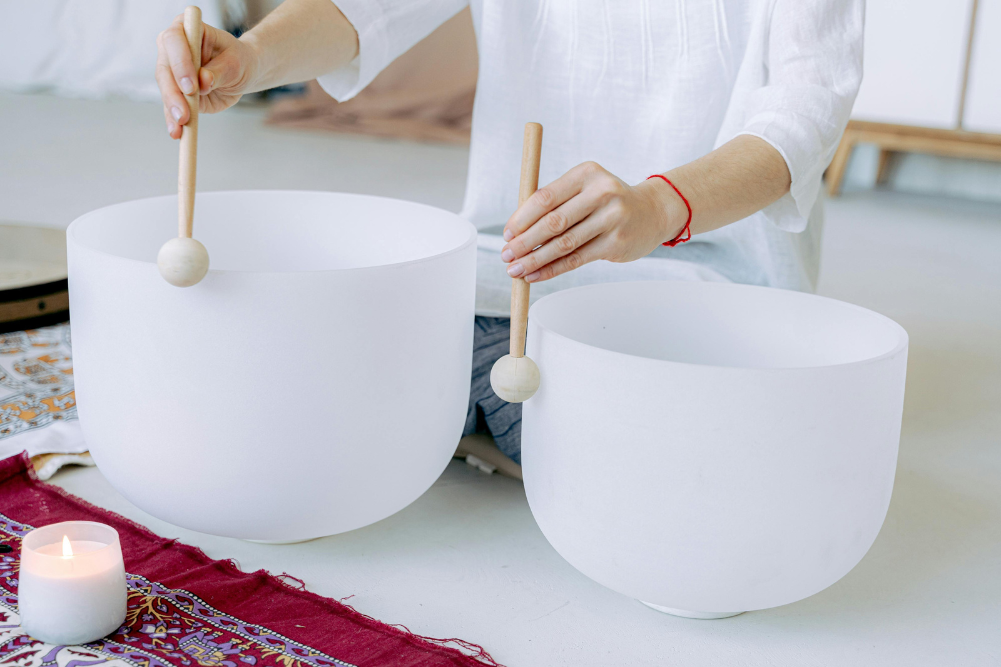3 simple tips for new meditators
On arriving at my first ten day silent vispassana meditation retreat at the age of 25, I thought I’d just slot right in. I was wrong. I spent the first day gathering cushions to place under my knees in various positions, trying to get comfortable. My search for comfort extended to trialling a small meditation stool to kneel on and then to a cloth meditation belt that wrapped around my back and knees to help me hold position. When the gong sounded the end of the day, I was still wriggling around in my spot.
The following day I took all of the cushions and various contraptions back and spent the sessions learning to just sit. The third day I realised as the gong sounded that I had been so caught up in my thoughts that I had forgotten to meditate! The day after that seemed to be going well until I opened my eyes to find that I had been snoring by myself in the hall long since everyone had left. And so it went on. My back hurt some sessions, I grew frustrated and angry with myself some sessions and some sessions were peaceful, beautiful and even blissful. Ahhhh, I thought. This is why the new meditators are put at the back of the hall. We are not the most tranquil of meditation companions.
From what I hear, all of my experiences at the retreat were completely normal and very common. I have found since then that meditating is easier to learn when I approach it consistently but lightly. In other words, starting small with few expectations. A regular practice for 5 minutes a day is better than a two hour session once in a blue moon. Here are 3 tips that helped me to relax and enjoy the process as I was learning to meditate.
1. Don’t try to not think
This is why the new meditators are put at the back of the hall. We are not the most tranquil of meditation companions.
Contrary to what you might have heard, meditating does not mean we need to somehow get rid of our thoughts. Our thoughts are what make us human. Left alone however, our minds are used to travelling in all directions, leaping from one thought to another and taking us and our emotions with them. (Hence, the common term, the monkey mind). Meditation is about training our minds to focus on a single thing, whether that be our breath, a visualisation, our chakras or some other type of meditation.
As we focus, thoughts will naturally flow through our minds and it is normal to get carried away with them. When you notice you are thinking, don’t become upset. Just say to yourself, Ah, I am noticing I am thinking, and gently return to the focus of the meditation.
As time goes on, and your mind becomes more able to focus, you will notice your thoughts more often and more easily. Just continue returning to the focus of the meditation. As your focus increases, you will naturally experience a gap between your thoughts. This is the space of meditation. As you sit more often, the gap will slowly widen and you will be able to separate your true self from your thoughts and feel the deeper reality of your soul.
2. Every meditation is different
I have found since then that meditating is easier to learn when I approach it consistently but lightly.
The Greek philosopher Heraclitus said “No man ever steps in the same river twice, for its not the same river and he’s not the same man”. Your thoughts, experiences and emotions one day are different to the next. So are your circumstances and the events in your life. Every time you meditate will be a different experience and different things will come up. It might be a pain in your body, a strong emotion of sadness or bliss, frustration, peacefulness or deep connection. Remind yourself not to get attached to a particular outcome. However it is, it is. You are learning to become aware of the patters of your mind and that takes time and persistence. The most important part of meditation is doing it. Learning to accept it for how it is that day is part of the process.
3. There is no one way to meditate
Whether you sit or lie down or you meditate on the breath, your chakras or a candle, do chanting, visualisations or yoga, just do what works for you. There are so many different approaches and techniques, and there will no doubt be one that appeals to you. Most yoga teachers offer meditation at the end of their sessions and there are more workshops, books and apps available than ever before. Try a few methods to see what you enjoy and what fits in with your lifestyle. Morning and evening meditations are ideal but if you find you can take five minutes during your lunch break, before a meeting, or in the car waiting to pick up the kids from school, you are more likely to continue your practice.
Above all, go lightly and be gentle with yourself.
Next post: Increase your compassion with loving kindness meditation







